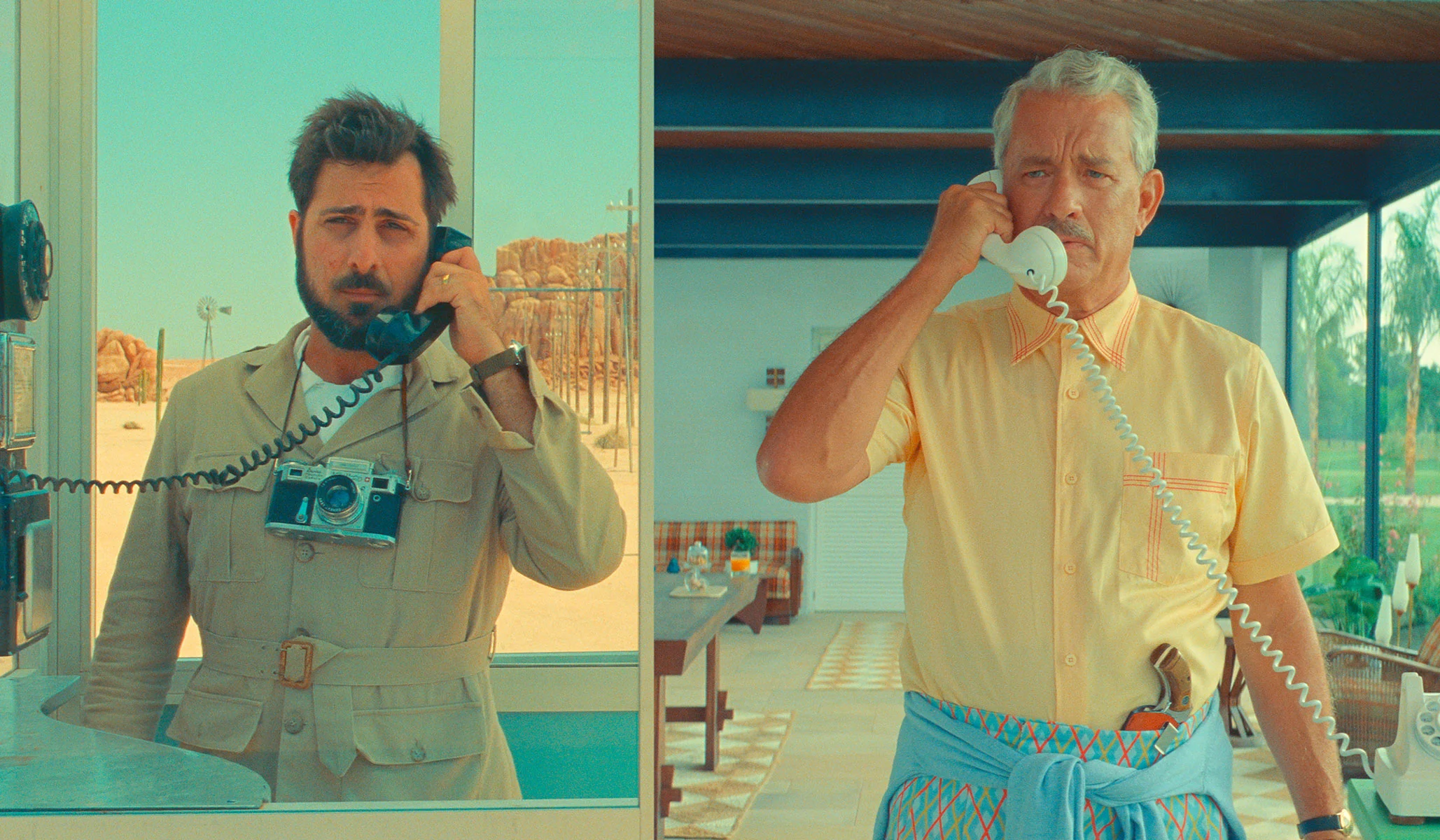Wes Anderson’s Asteroid City, set in 1955, is his first successful period film, evoking escapism and nostalgia. Anderson’s earlier works, including Rushmore, The Royal Tenenbaums, The Life Aquatic, and The Darjeeling Limited, were moving due to their palpable sentimentality and need for retreat. However, in Asteroid City, these same qualities make the film feel as precious and limited as Anderson’s detractors once alleged. Despite this, the film expresses something genuine, as it is “superficially superficial,” to borrow a phrase from Max Ophuls.
The film introduces Anderson’s vision of the 1950s through recognizably alienated artists, playwright Edward Norton and TV commentator Bryan Cranston, attempting to define their place in the era through a documentary program about theater. This program turns into a big-screen performance piece, a movie within a movie, where broken families and a busload of tourists and school kids visit a Midwestern military bomb-testing base that was established where an asteroid had penetrated the atmosphere, leaving a large, mysterious crater – Asteroid City. The base and tourist site are operated by government personnel and local entrepreneurs whose particular customs and habits reflect back the private and cultural obsessions initially introduced.
Despite its overtly stylized nature, Asteroid City combines the suspense of playing a family board game with TV lore, featuring meticulous animated details. Each transition is presented in a different screen size, with separate sequences emphasizing the multimedia contrivance, including title-cards and an intermission, as in a theater program. For a lapsed Andersonian like the author, this prismatic approach to storytelling is so virtuosic that it feels like Anderson is just showing off again, as in his previous films, The Grand Budapest Hotel, Isle of Dogs, and The French Dispatch.
Despite these criticisms, Anderson retrieves the signature farcical context that once felt profoundly personal. The fact that everything looks toylike and distanced in Asteroid City might be the point of that Atomic Age sci-fi title, recalling an America under threat of the Bomb, yet emotionally blasted — alienated — by insecurity and faithlessness. Anderson uses the accoutrements of childhood to convey the sense of a haunted, spiritually vacant country. The best scenes are among Anderson’s finest, including Schwartzman and Hanks grieving while “saying the same thing”; a father and son truly recognizing each other for the first time; an actress and a photographer revealing themselves at a distance; an actor envisioning his departed soul mate; and brainiac kids trying out their smarts.
Anderson’s reference to the Covidapocalypse is culture shock and more effective than other filmmakers’ attempts to address the pandemic. In the film’s curtain-call finale, Actors Studio hopefuls chant and repeat “You can’t wake up if you don’t fall asleep.” Anderson’s story-time nostalgia salutes guilelessness and yearning, creating a fresh cosmology that syncs with post-Covid America. An American visionary, Anderson embraces his bourgeois adolescence with poetic accuracy, celebrating the innocence we miss now more than ever.

